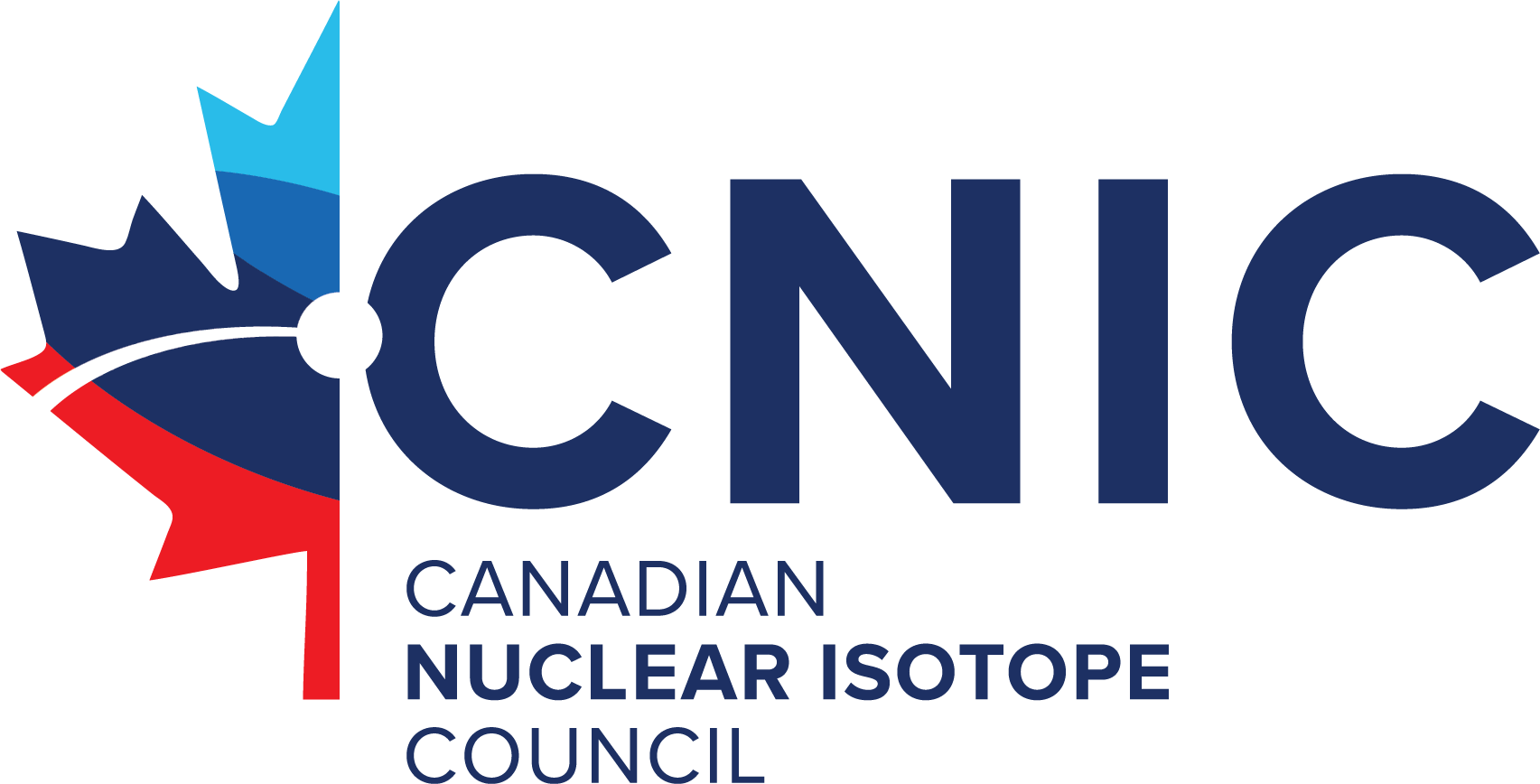On December 12th and 13th, the Canadian Nuclear Isotope Council (CNIC) was proud to partner with the Canadian Medical Isotope Ecosystem (CMIE) to host the first annual Symposium on Medical Isotopes in Vancouver, BC.
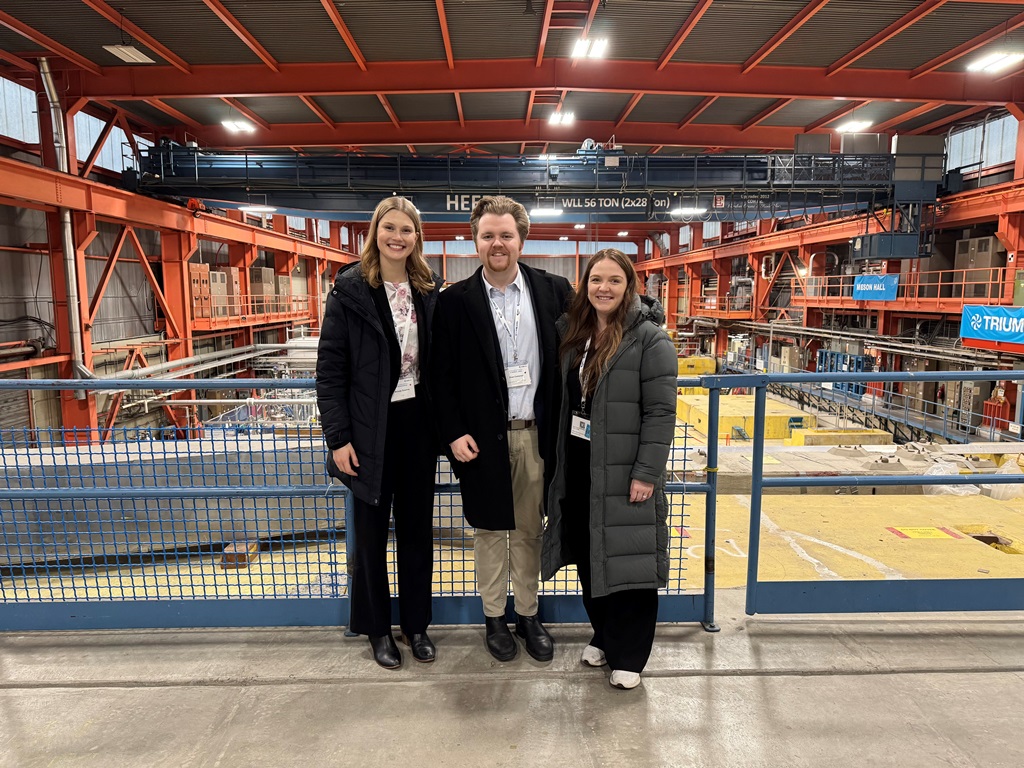
As part of the programming of the symposium, attendees, including the CNIC team, were pleased to be invited to visit TRIUMF’s facility. TRIUMF is Canada’s particle accelerator centre and has served as a hub for innovation since its founding in 1968. TRIUMF attracts top talent from around the world to lead its research efforts and is also home to the world’s largest cyclotron and a new superconducting linear accelerator.
Upon arriving at TRIUMF, located on the University of British Columbia’s campus, we were welcomed by Kathryn Hayashi, President and CEO of TRIUMF Innovations, who delivered an informative presentation to outline the history and formation of TRIUMF, laying the foundation for TRIUMF’s leadership today.
The tour began with a walk around TRIUMF’s 12-acre property, with the first stop being the new Institute for Advanced Medical Isotopes (IAMI), which is still under construction. Once completed, this facility will broaden Canada’s research capabilities in nuclear medicine and particle physics and will increase TRIUMF’s annual scientific productivity by two to three times its current level.
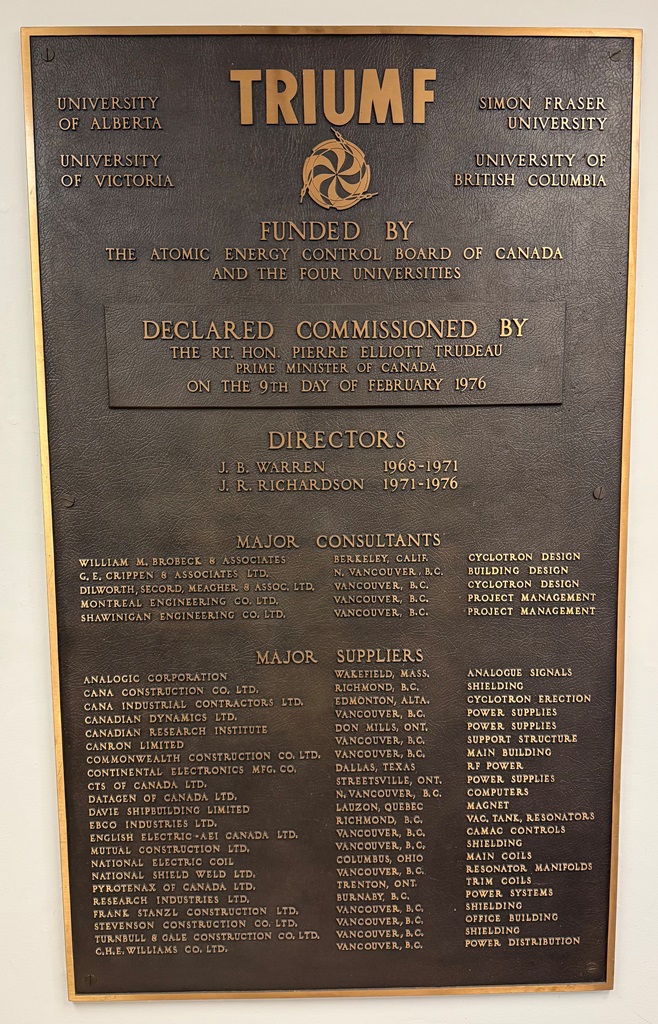
Our group then proceeded into the main building, passing by a plaque commemorating the official opening of the facility in 1976, where Prime Minister Pierre Trudeau famously declared, “I don’t really know what a cyclotron is, but I am certainly very happy Canada has one!” We remarked on the progress we have made since that time to raise awareness among elected officials about the importance of nuclear technologies and infrastructure like cyclotrons. Today, the CNIC continues to work alongside our members like TRIUMF Innovations to provide resources to key decision makers, inform policy decisions, and ensure governments are educated about Canada’s isotope leadership.
At the heart of TRIUMF is the 520 MeV cyclotron that produces the primary proton beams. A large fraction of TRIUMF’s isotope production and research programs rely on this cyclotron.
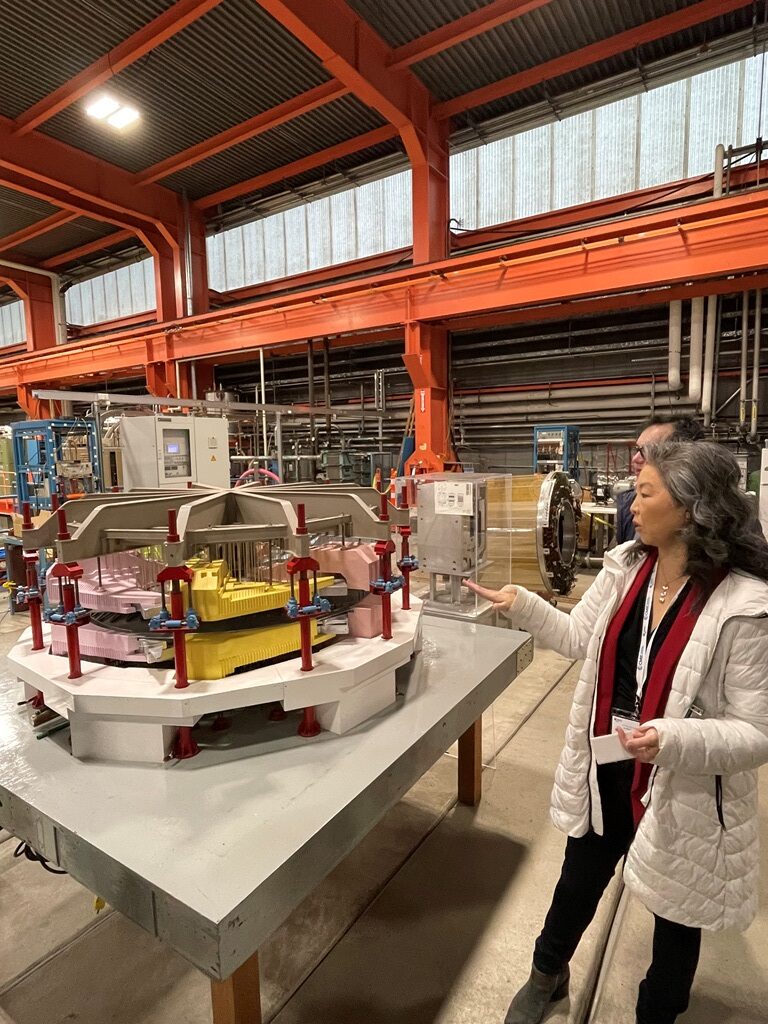
On the tour, we were thrilled to see the scale of the world’s largest cyclotron in person, which was operational during our visit. Due to the electromagnetic field created by the cyclotron, we were excited to experience the phenomenon of the “floating paper clip”, where regular paper clips stand upright and appear to float.

After standing atop the cyclotron, our tour continued across the rest of the facility, with attendees struck by the size of the facility and the sheer volume of equipment, tooling, and machinery, all of which support the innovative work that TRIUMF leads. Through projects driven by TRIUMF’s Advanced Rare Isotope Laboratory (ARIEL) and the Canadian Rare-Isotope Facility with Electron-Beam Ion Source (CANREB), we were amazed by the scale of the research and discovery happening all within TRIUMF’s facilities.
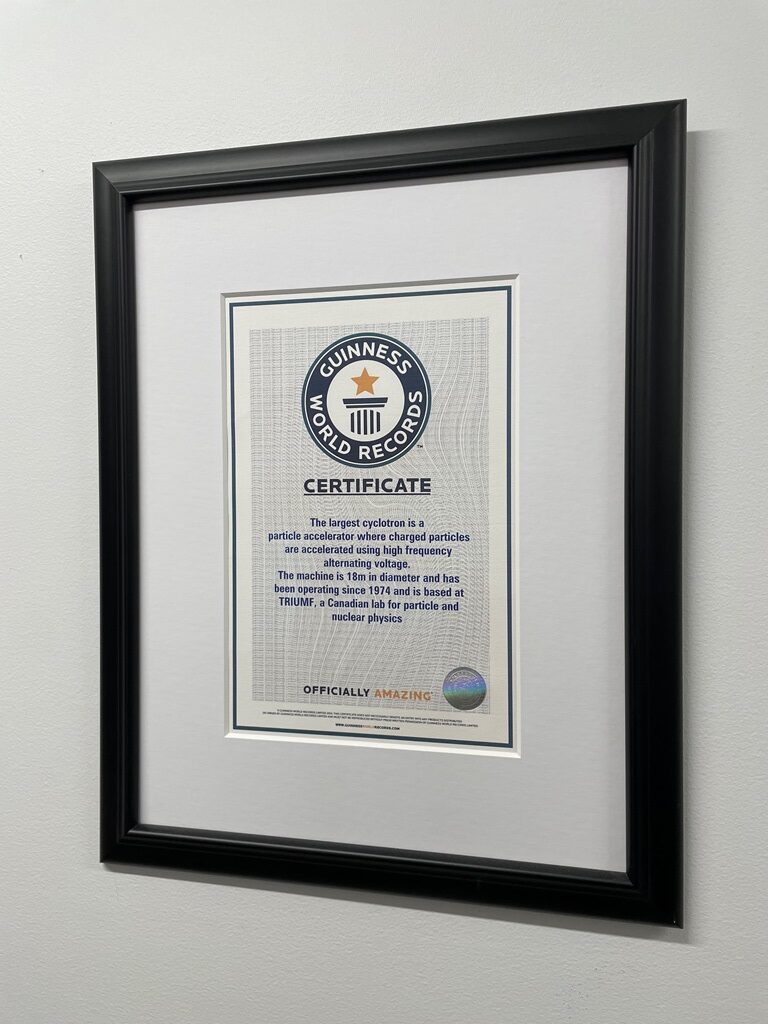
As the tour concluded, we walked by a certificate from Guinness World Records, officially certifying that TRIUMF’s cyclotron is the largest in the world. It’s not every day you get to visit a genuinely world record-breaking facility!
The CNIC team was very pleased to join the symposium attendees for this exciting tour of TRIUMF and send our thanks to Kathryn Hayashi and the entire team at TRIUMF for hosting us, and for the important, life-changing work they lead.
